“The Cultural Mosaic of Recipes: A Journey Through Food”
Recipes and Stories From Different Cultures
Food has a magical way of connecting people, doesn’t it? It’s like a universal language that transcends barriers and brings people together. Every recipe carries a story, a memory, or a tradition from its origin. Today, let’s take a flavorful journey around the globe and uncover some unique recipes and the beautiful stories behind them.
- The Art of Cultural Storytelling Through Food
Every culture has its own culinary masterpieces, each shaped by history, geography, and tradition. Food isn’t just sustenance—it’s an expression of identity and community. Whether it’s a family recipe passed down for generations or a dish that marks a celebration, every bite tells a story.
- Italy: The Tale of Pasta and Love
When you think of Italian cuisine, pasta inevitably comes to mind. Spaghetti Carbonara, a creamy, cheesy delight, originated in Rome during World War II. Its creation is linked to American soldiers who introduced bacon to Italians, inspiring a blend of local ingredients like eggs, cheese, and pasta. Isn’t it amazing how war birthed a dish that is now loved worldwide?

- Pakistan: Nihari and Festivity
Pakistan’s rich culinary tradition is deeply tied to its history and culture. Nihari, a slow-cooked stew of tender meat and aromatic spices, originated in the royal kitchens of the Mughal Empire. It was once served as a breakfast dish to nobles after morning prayers. Today, it remains a symbol of celebration, often enjoyed with naan bread during special occasions. The meticulous preparation of nihari represents the patience and love embedded in Pakistani cuisine.
Another cultural favorite is “samosa,” a savory snack with spiced fillings, perfect for teatime or festive gatherings. These recipes are often passed down through families, ensuring the legacy of flavors continues.
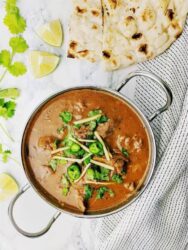
- Japan: Sushi and Simplicity
Sushi, synonymous with Japanese culture, is a blend of art and precision. It originated as a method of preserving fish by fermenting it with rice. Over time, it evolved into the fresh, delicate rolls we know today. Sushi isn’t just a meal; it’s an experience that embodies Japan’s respect for nature and balance.

- Mexico: Tacos and Tradition
Tacos are more than just street food—they’re a cultural icon in Mexico. Legend has it that tacos date back to ancient Aztec times when fillings were wrapped in corn tortillas. Today, tacos have countless variations, each region boasting its own twist. From smoky barbacoa to zesty fish tacos, every bite celebrates Mexico’s rich heritage.

- Morocco: Tagine and Hospitality
Moroccan cuisine is a feast for the senses, and nothing embodies this more than the tagine. This slow-cooked stew, named after the clay pot it’s cooked in, is a staple of Moroccan homes. Often shared during gatherings, the tagine reflects the warmth and hospitality of Moroccan culture.
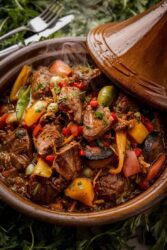
- India: Spices and Soulful Curry
India’s culinary history is as vibrant as its spices. Take biryani, for instance—a fragrant rice dish believed to have been introduced by Persian travelers. Over centuries, it evolved into dozens of regional variations, from Hyderabad’s rich flavors to Kolkata’s subtle sweetness. Every family has its own biryani recipe, making it a dish of endless possibilities and memories.
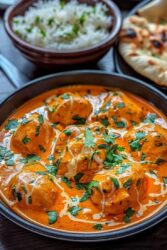
- France: Crêpes and Elegance
Crêpes are a quintessential French delight with a history that dates back to the 13th century. Originally made during Candlemas to symbolize prosperity, crêpes have become a versatile dish enjoyed both sweet and savory. Whether filled with Nutella or ham and cheese, crêpes are a symbol of French sophistication.

- Korea: Kimchi and Community
Kimchi, the beloved fermented side dish of Korea, is more than just food—it’s a tradition. Families gather during “Kimjang,” an annual event where kimchi is prepared in large quantities for the winter. This practice is recognized by UNESCO as an intangible cultural heritage, highlighting its significance in Korean culture.

- Ethiopia: Injera and Togetherness
Ethiopian meals are centered around injera, a spongy flatbread made from teff flour. Served with an array of flavorful stews, injera is a communal dish that encourages sharing. Eating together from one plate reflects Ethiopia’s emphasis on unity and connection.

- Middle East: Hummus and Heritage
Hummus, the creamy chickpea dip, has been a staple in Middle Eastern cuisine for centuries. Its origins are debated, but one thing’s certain: hummus is a unifying dish enjoyed across borders. Served with warm pita bread, it’s a symbol of hospitality and warmth.

- Thailand: Tom Yum and Vibrancy
Tom Yum soup, with its bold flavors of lemongrass, lime, and chili, perfectly represents Thailand’s love for balance and contrast. This spicy-sour soup is a favorite comfort food that brings families together, especially during cooler months.
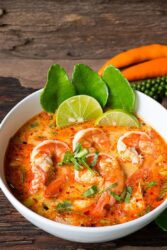
- Spain: Paella and Celebration
Paella, a saffron-infused rice dish, originates from Valencia. Traditionally cooked over an open fire, paella was a meal for farmworkers made with whatever ingredients were on hand. Today, it’s a celebratory dish enjoyed with family and friends, embodying Spain’s festive spirit.

14.Sweden: Fika and Cinnamon Buns
Fika, the Swedish coffee break, isn’t complete without a cinnamon bun. This tradition isn’t just about food; it’s about slowing down and enjoying the moment with loved ones. Fika reflects Sweden’s value of balance and mindfulness.

15. Vietnam: Pho and Comfort
Pho, Vietnam’s iconic noodle soup, is the ultimate comfort food. Its origins date back to the early 20th century, influenced by French and Chinese cuisines. A steaming bowl of pho is a reminder of home and tradition, no matter where you are.
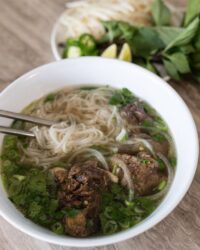
Conclusion: A World on Your Plate
Recipes and their stories are a gateway to understanding cultures and traditions. They show us how history, geography, and human connection shape the way we eat and live. So the next time you sit down for a meal, take a moment to appreciate the journey that brought it to your plate.
FAQs
- Why do recipes often carry cultural significance?
Recipes reflect the history, geography, and traditions of a culture, making them a valuable part of its identity.
- What’s the oldest dish mentioned in the article?
Sushi’s origins, dating back centuries, make it one of the oldest dishes discussed here.
- Can food connect people from different cultures?
Absolutely! Food acts as a universal language, bringing people together through shared experiences.
- What’s unique about Pakistan’s nihari?
Nihari is a slow-cooked stew with deep flavors, representing Mughal culinary heritage and often enjoyed during festive occasions.
- How can I explore world cuisines at home?
Start by researching recipes online, experimenting with new ingredients, and learning the stories behind the dishes.


